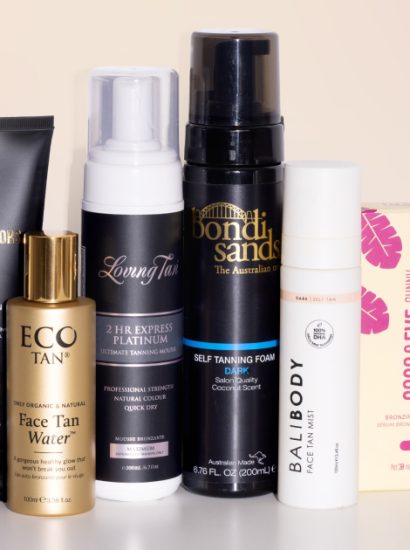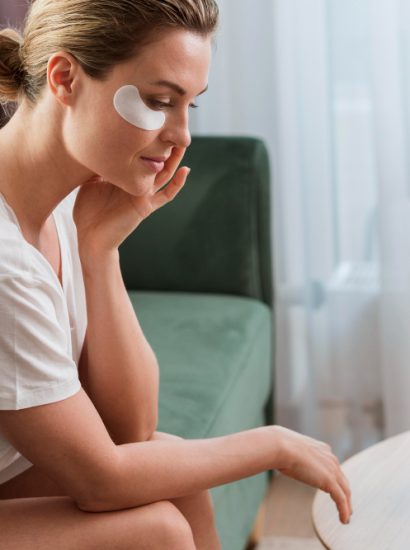In the realm of skincare, Tretinoin Skincare Routine few ingredients boast the proven efficacy and versatility of Tretinoin. Also known as Retin-A, Tretinoin is a derivative of vitamin A that has been extensively studied and praised for its ability to improve skin texture, reduce wrinkles, and treat acne. However, harnessing the full potential of Tretinoin requires more than just slathering it on haphazardly. Crafting a well-structured skincare routine is paramount to ensure optimal results while minimizing potential side effects.
1. Understanding Tretinoin
Tretinoin Skincare Routine Tretinoin works by increasing cell turnover and stimulating collagen production, leading to smoother, firmer, and more youthful-looking skin. It also helps unclog pores, making it an effective treatment for acne and acne scars. By promoting exfoliation and renewal at the cellular level, Tretinoin addresses a multitude of skin concerns, including fine lines, wrinkles, uneven tone, and texture.
2. Consultation with a Dermatologist
Tretinoin Skincare Routine Before embarking on a Tretinoin journey, it’s crucial to consult with a dermatologist or skincare professional. They can assess your skin type, discuss your skincare goals, and recommend the appropriate Tretinoin strength and formulation. Additionally, they’ll provide valuable insights into potential side effects and how to manage them effectively.
3. Choosing the Right Tretinoin Product
Tretinoin is available in various formulations, including creams, gels, and microspheres. The choice between them often depends on individual skin type and preferences. Creams are typically more emollient and moisturizing, making them suitable for dry or sensitive skin, while gels are lighter and may be preferred by those with oily or acne-prone skin. Microsphere formulations are designed to release Tretinoin gradually, minimizing irritation.
4. Start Slowly
Tretinoin Skincare Routine One of the cardinal rules of Tretinoin usage is to start slowly and gradually increase frequency as tolerated. Begin by applying a pea-sized amount of Tretinoin to clean, dry skin every other night. As your skin acclimates to the product, you can gradually increase the frequency to nightly use. It’s normal to experience some mild irritation, redness, and peeling, especially during the initial weeks of use. However, if irritation persists or becomes severe, scale back on the frequency and consult your dermatologist.
5. Cleansing
Tretinoin Skincare Routine Proper cleansing is essential in a Tretinoin skincare routine to remove impurities, excess oil, and makeup without stripping the skin’s natural moisture barrier. Opt for gentle, non-foaming cleansers that won’t exacerbate dryness or irritation. Avoid harsh scrubbing or abrasive cleansing tools, as they can further sensitize the skin.
6. Moisturizing
Hydration is key when using Tretinoin, as it can cause dryness and peeling, especially in the initial stages. Incorporate a rich, nourishing moisturizer into your routine to help replenish lost moisture and soothe irritation. Look for products formulated with hydrating ingredients like hyaluronic acid, ceramides, and glycerin. Apply moisturizer liberally after Tretinoin to lock in hydration and minimize potential irritation.
7. Sun Protection
One of the most critical aspects of a Tretinoin skincare routine is sun protection. Tretinoin can increase the skin’s sensitivity to sunlight, making it more prone to sunburn and damage. Therefore, it’s imperative to wear broad-spectrum sunscreen with an SPF of 30 or higher daily, even on cloudy days. Apply sunscreen generously and reapply every two hours, especially if you’re spending extended periods outdoors.
8. Avoiding Irritants
Tretinoin Skincare Routine While Tretinoin can work wonders for your skin, it’s essential to avoid other potentially irritating skincare ingredients that may exacerbate sensitivity. Common culprits include harsh exfoliants, alcohol-based toners, and products containing fragrance or essential oils. Stick to gentle, non-irritating skincare products that complement the benefits of Tretinoin without causing additional inflammation or redness.
9. Patience and Consistency
Patience is paramount when incorporating Tretinoin into your skincare routine. While some people may experience visible improvements in as little as a few weeks, it often takes several months to see significant results. Consistency is key: stick to your Tretinoin regimen diligently, even if you don’t see immediate changes. Over time, you’ll likely notice smoother, clearer, more radiant skin with continued use.
10. Adjustments and Tweaks
As your skin adapts to Tretinoin, you may need to make adjustments to your skincare routine to address any issues that arise. If you experience excessive dryness, scaling back on the frequency of Tretinoin application or incorporating a hydrating serum can help restore balance. Conversely, if you’re not seeing the desired results, your dermatologist may recommend stepping up to a higher strength or adding complementary treatments like antioxidants or peptides.
Conclusion
Tretinoin Skincare Routine Incorporating Tretinoin into your skincare routine can be a game-changer for achieving smoother, younger-looking skin. By following these ten steps, you can maximize the benefits of Tretinoin while minimizing potential side effects. Remember to be patient, consistent, and proactive in addressing any concerns that arise along the way. With dedication and the right approach, you can achieve your skincare goals and unlock the full potential of Tretinoin.
FAQs
Q1: What are the common side effects of using Tretinoin?
A1: Common side effects of Tretinoin include redness, dryness, peeling, and increased sensitivity to sunlight. These symptoms are usually mild and temporary, but if they persist or become severe, consult your dermatologist.
Q2: Can I use Tretinoin with other active ingredients like vitamin C or AHAs/BHAs?
A2: Yes, Tretinoin can be combined with other active ingredients like vitamin C and AHAs/BHAs, but it’s essential to introduce them gradually to avoid overloading or sensitizing the skin. Consult with your dermatologist to ensure compatibility and proper usage.
Q3: How long does it take to see results from a Tretinoin skincare routine?
A3: Results from a Tretinoin skincare routine can vary depending on individual skin type and concerns. While some people may notice improvements in as little as a few weeks, it often takes several months of consistent use to see significant changes in skin texture, tone, and clarity.
Q4: Can Tretinoin be used during pregnancy or while breastfeeding?
A4: Tretinoin is not recommended for use during pregnancy or while breastfeeding, as it may pose potential risks to the developing fetus or infant. Consult with your healthcare provider for alternative skincare options that are safe for use during pregnancy and lactation.
Q5: What should I do if I experience excessive irritation or dryness while using Tretinoin?
A5: If you experience excessive irritation or dryness while using Tretinoin, scale back on the frequency of application and incorporate soothing, hydrating skincare products into your routine. If symptoms persist or worsen, consult your dermatologist for
Also read : FACE REALITY SKINCARE CLEARDERMA MOISTURIZER MASTERY: 10 REASONS IT’S YOUR SKINCARE HERO





